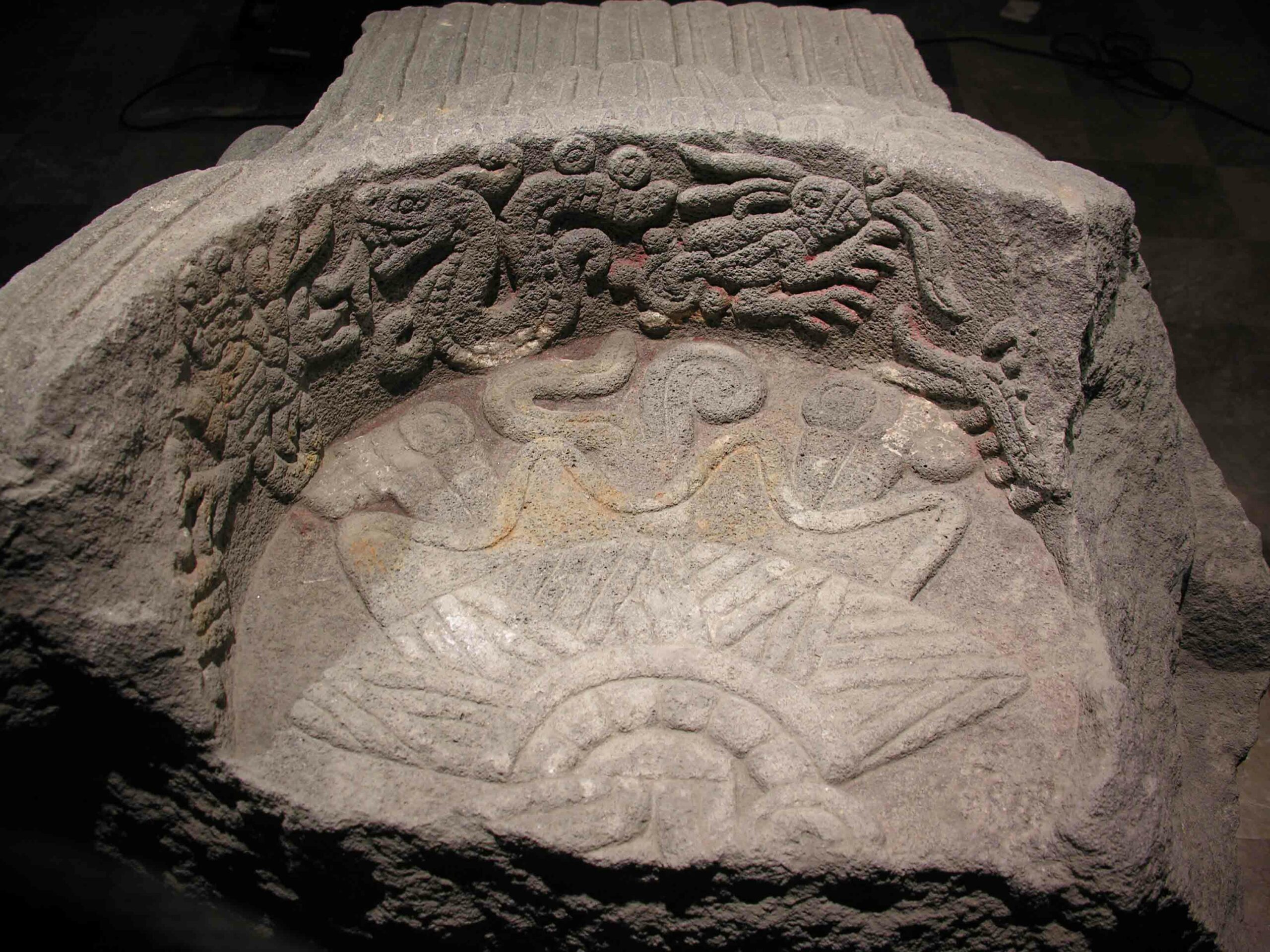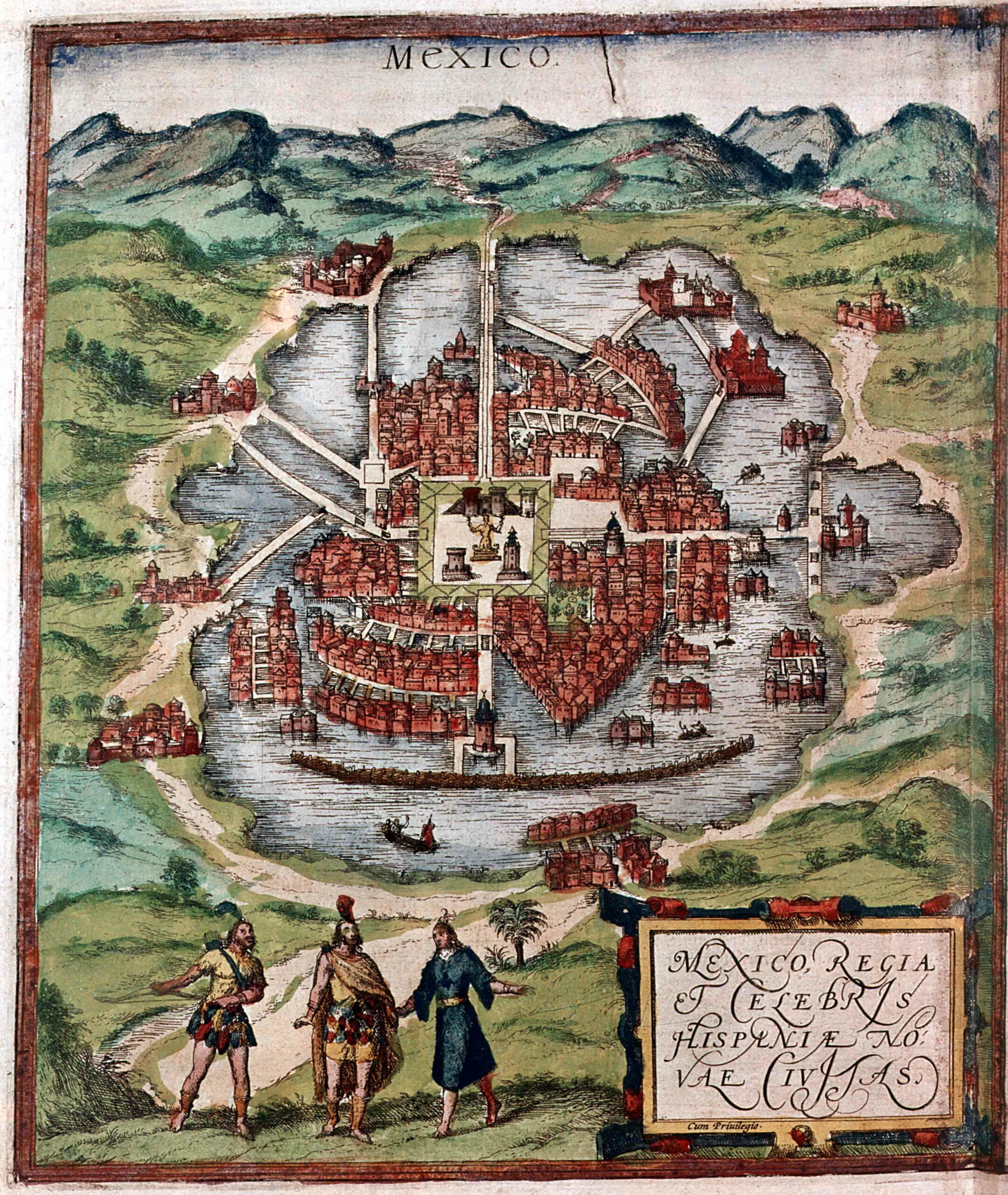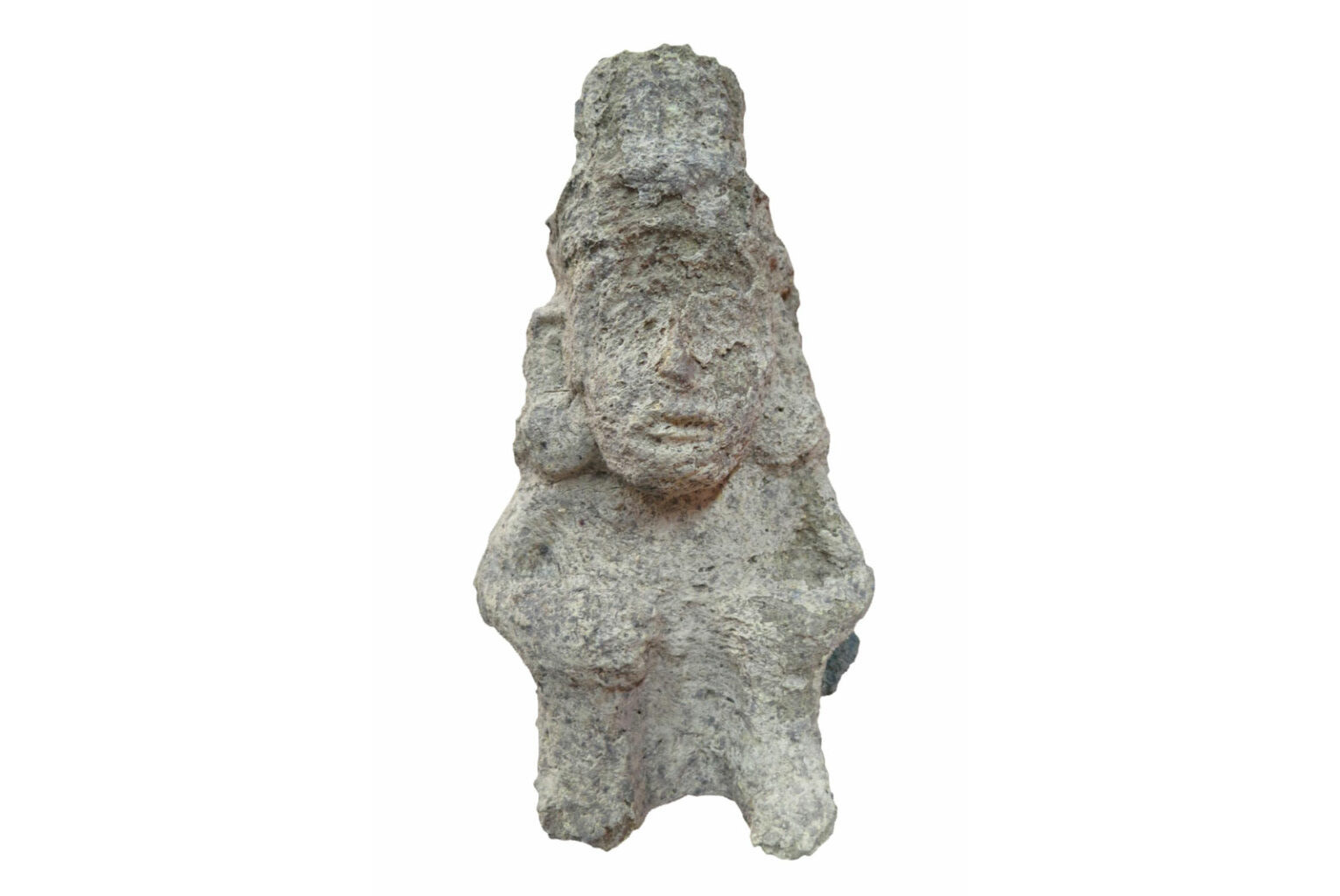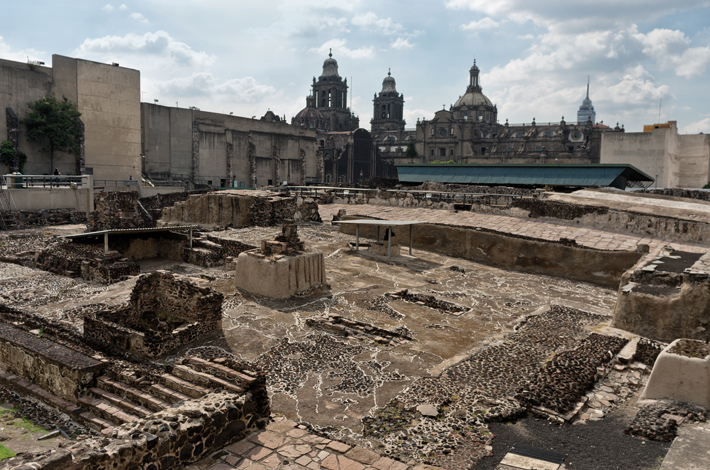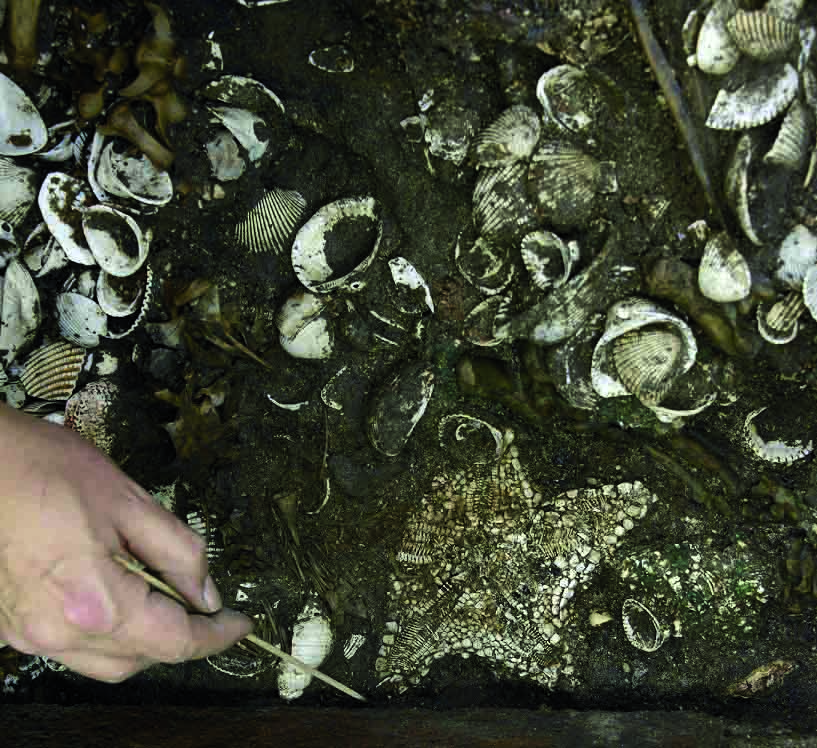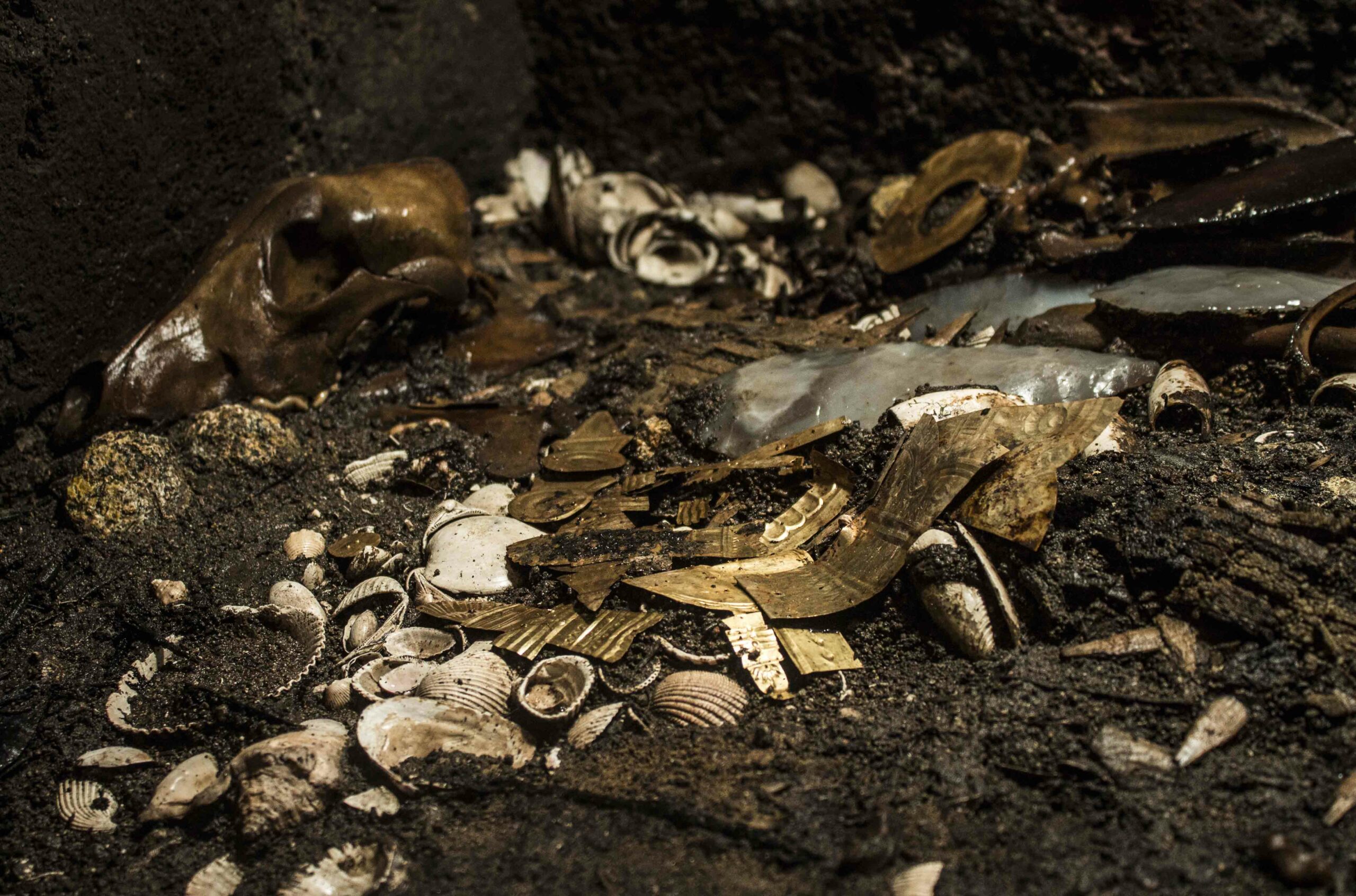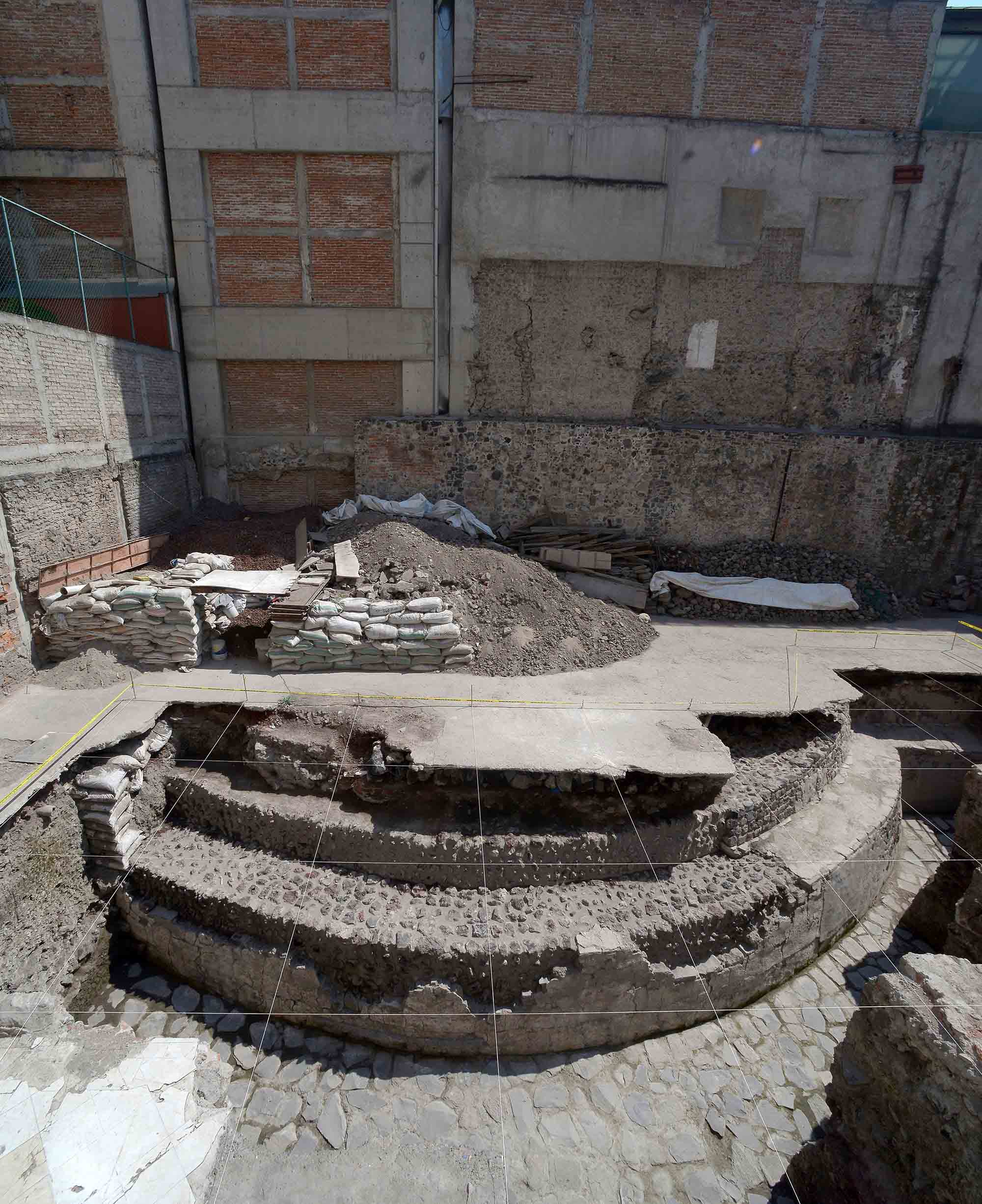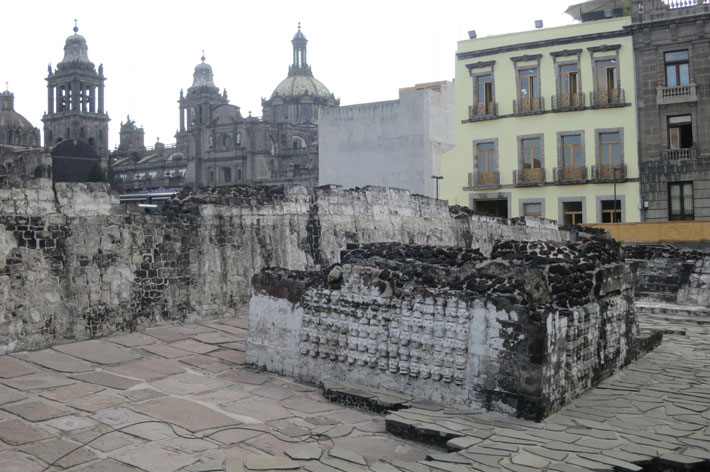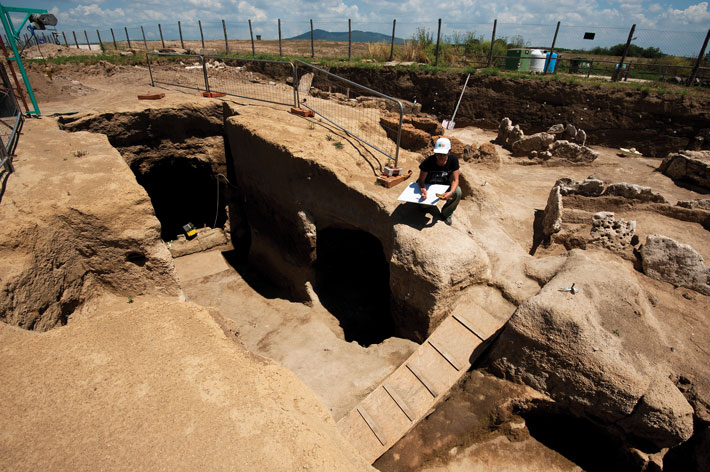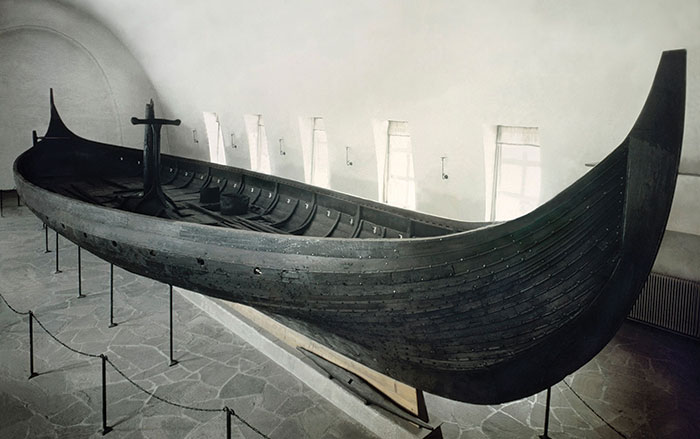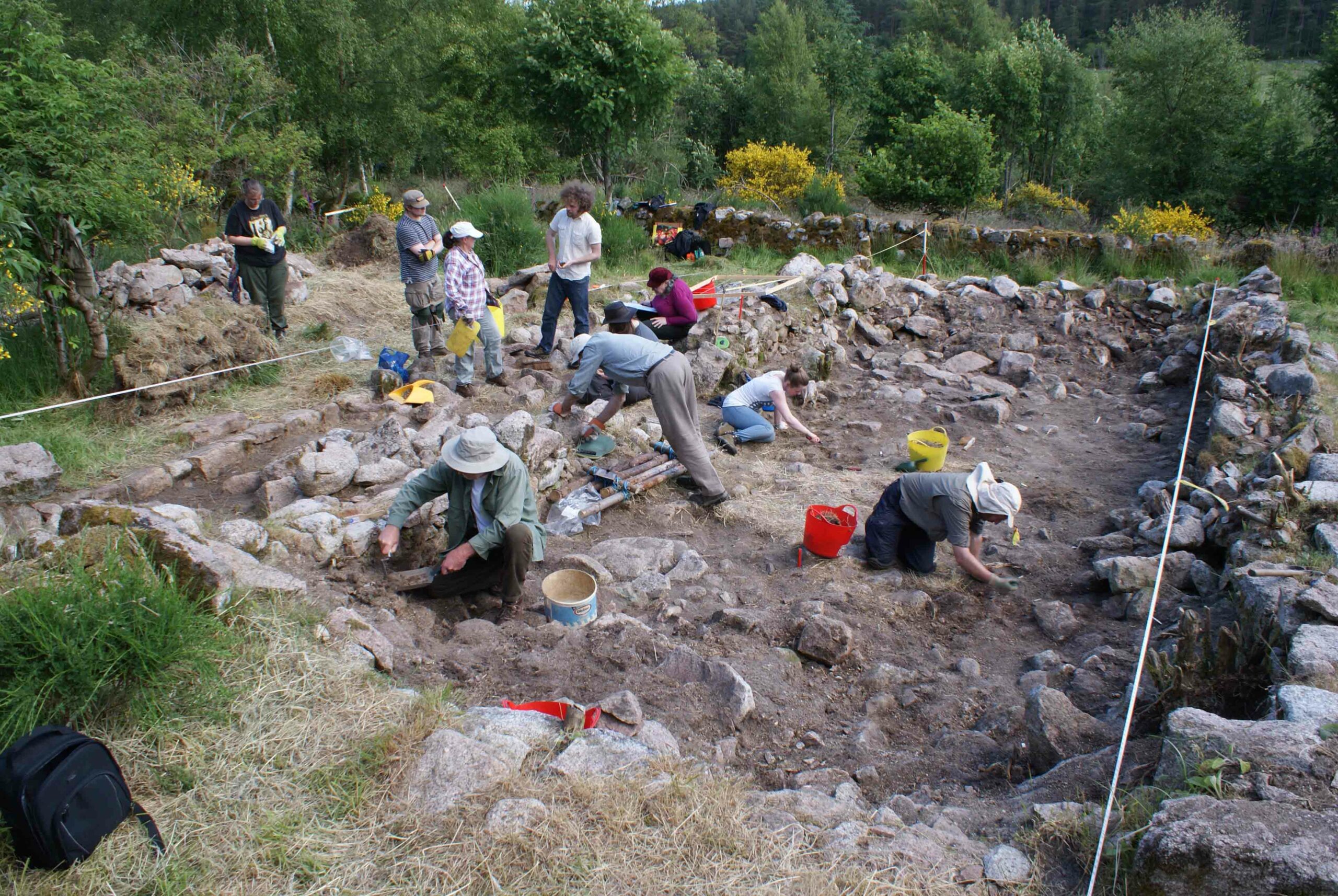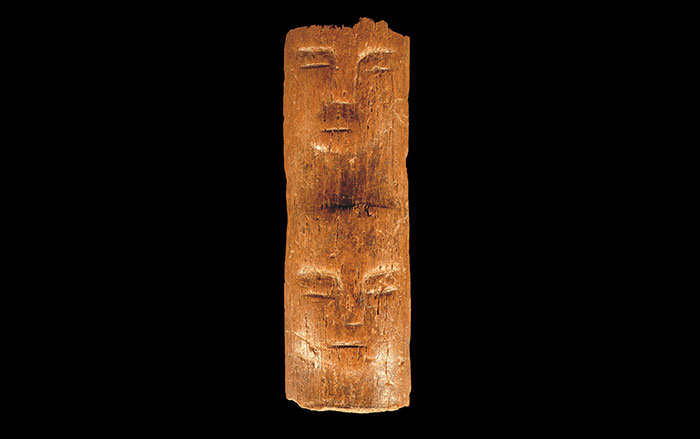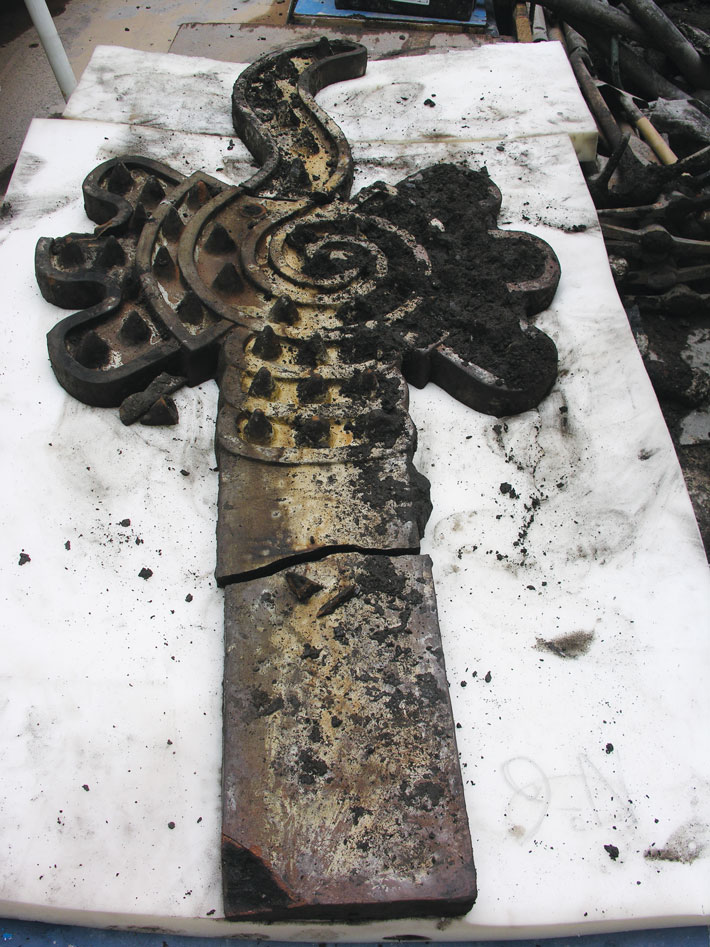
In 1985, an earthquake measuring 8.1 on the Richter scale killed some 10,000 people and destroyed or compromised thousands of buildings in Mexico City. Some of those buildings happened to have been standing over Aztec civic and holy sites. More than two decades later, after workers demolished a building rendered structurally unsound by the quake, archaeologists dug down and found the ruins of an elite school near the Templo Mayor. Known as the Calmécac, which in the Nahuatl language spoken by the Aztecs means “school,” the complex was where Aztec nobility sent their children to be trained in war and worship. “The school’s proximity to the Templo Mayor shows the elite’s concern for educating young men for power,” says Harvard historian David Carrasco. The emperor Moctezuma II himself was a graduate.
An enormous structure in antiquity, even larger than the Templo Mayor, the school had a courtyard whose roof was adorned with a row of spiral ornaments representing snails, which were associated with the rain god Tlaloc. Spanish colonial-era drawings had suggested these adornments were small, even dainty, decorative touches. But when archaeologists discovered them, the ornaments actually stood a monumental eight feet tall and must have been visible from all over Tenochtitlan. Of the seven found by archaeologist Raúl Barrera, all had been removed in antiquity from their rooftop perches and laid below a floor. By the time the Spaniards arrived, they had been replaced with similar ornaments that the Spaniards later destroyed, of which no traces have been found. Since their rediscovery, the Calmécac roof ornaments have become one of the most distinctive motifs of ancient Mexico. Excavation at the Calmécac proved difficult. Eighteen feet beneath the city, the site continually flooded and had to have water pumped out, a problem that speaks to the city’s unusual geography. Tenochtitlan was built on a group of marshy islands in the center of Lake Tezcoco. These were gradually filled in with lines of tree trunks and soil using an ancient land-reclamation technique similar to that employed in Tenochtitlan’s contemporary city, Venice. As in Venice, canals crisscrossed the city. Archaeologists have found traces of some of them, as well as a pier that jutted into the lake in antiquity. Lake Tezcoco has been almost completely filled in over the centuries, but the soil underneath the city remains porous and damp, “like gelatin,” says archaeologist Eduardo Matos Moctezuma. Although the city has been gradually settling at a rate of up to 20 feet per century into the lake bed, not so the Templo Mayor, which was built on sturdy landfill. It is therefore sinking at a much slower pace, causing it to gradually “rise” relative to its surroundings such that it will, eventually, regain the 150-foot height it had in antiquity.
Once the remains of the Calmécac were stabilized, archaeologists discovered walls and wide staircases, some with ancient footprints still in their stucco surfaces. They also uncovered dozens of artifacts that hint at student life in A.D. 1500, including well-worn ceramic plates, a clay spoon, and flint and obsidian knives that probably had both practical and ceremonial uses. PAU director Raúl Barrera has excavated only a small corner of the ancient school because most of it remains beneath busy Donceles Street and its taco stands and cantinas. Digging any further would endanger those buildings’ foundations, he explains, “and then, instead of us excavating, someone would have to come excavate us.”


